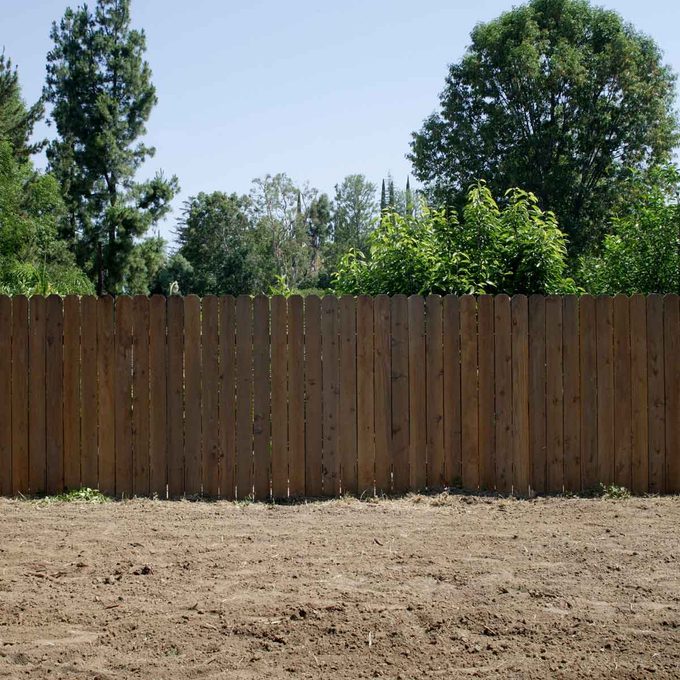How (and Why) to Kill Grass | The Family Handyman
Every editorial production is independently selected, though we may be compensated or receive an affiliate commission if you buy something through our links. Ratings and prices are authentic and items are in stock as of fourth dimension of publication.
If your backyard looks completely hopeless, it might be time to offset from scratch.

When your lawn is overrun with weeds, spot-spraying or pulling them by hand might seem similar a good idea. Merely at a certain bespeak, it may be improve to cut your losses and simply commencement over. The rule of thumb is this: If your lawn is l percentage or more than bare basis and weeds, it's all-time to kill off the entire lawn and supercede it with new grass.
Killing your entire lawn gets rid of everything — grassy and broadleaf weeds, off-blazon lawn grasses and the few strands of good grass you have left. But subsequently killing your unabridged lawn, what remains is a grass- and weed-costless surface that's ready for its face-elevator. Removing all vegetation too allows you to smooth whatever unevenness, right drainage problems or reduce soil compaction problems.
It'south besides a swell fourth dimension to upgrade your in-ground irrigation or to install a system if you don't take ane. But most importantly, past starting over yous have a hazard to introduce new and improved lawn grasses that require less water, fertilizer and chemicals. Mother Nature volition thank you.
How to Kill Grass
In that location are 4 principal ways to impale all the grass and weeds in your lawn. They crave varying degrees of expense, time and effort.
Weed Killer
The easiest, quickest and virtually effective way to kill off your lawn is to spray it with glyphosate, such as Bonide Kleenup Weed Killer Concentrate. Information technology needs to be mixed with water earlier using, but there are ready-to-utilise options available besides.
It's worth noting that although glyphosate has been under scrutiny for possible toxicity, a recent review by the Environmental Protection Agency (EPA) concluded there are "no risks of concern to human health when glyphosate is used in accord with its current label."
If y'all're OK with using conventional herbicides, this is a neat option, which should take almost 10 to 14 days for a complete kill. Remove every bit much of the dead weeds and grass every bit you can before reseeding or sodding. This can be washed with a bow rake or foliage rake.
I word of caution: Exist careful not to employ "extended control" versions of weed and grass killers. They include other chemicals that leave a remainder in the soil for upwardly to four months and volition prevent anything from growing, including the seed yous sow or sod you lot lay.
Vinegar
You can also endeavor an organic approach to chemic command by applying a horticultural vinegar such as Light-green Gobbler. Unlike the 5 percentage household vinegar used in the kitchen, horticultural vinegar is usually 10 percent to 20 percent acetic acid. Acetic acid "burns" the weeds away, so wearing gloves and other protective wear is a expert idea to avoid contact with peel. These products are ready to employ right out of the bottle. Horticultural vinegar works well but tin can be expensive.
Plastic
If you prefer a completely chemical-gratuitous method, try covering your entire backyard with heavy-duty black plastic.
Start by setting your mower every bit low as you can. Scalp down your backyard, remove every bit much grass and weeds as possible, then immediately cover the backyard with plastic. Anchor the edges with sod staples, boards, bricks or other heavy items that will keep the plastic from blowing away. Depending on the time of year, you'll need to leave the lawn covered for six to 8 weeks, so the sun's heat and the lack of rain can do the residue. Once the grass is completely dead, remove the plastic and the expressionless stuff underneath, then prep the area for seeding or sodding.
This method is fourth dimension-consuming and requires some prep piece of work, but it works well if you accept the time and patience to complete the procedure. Unfortunately, you cannot recycle plastic sheeting. If y'all can't find a way to repurpose it, y'all'll have to put it out with the trash.
Physically Remove It
The last option is to physically remove your existing grass and weeds, past hand or by renting a sod cutter (about $125 per solar day). In one case y'all've dug out the vegetation, you'll need to remove and dispose of the yard debris. Most sanitation companies volition haul it abroad for a fee.
Once you go through the heavy work, regrade the surface using a heavy-duty landscape rake such as the Midwest Aluminum Landscape Rake or a lawn leveler such as the Standard Golf Levelawn. Finish upwards past prepping the area for seeding or sodding.
Source: https://www.familyhandyman.com/article/how-and-why-to-kill-grass/
0 Response to "How (and Why) to Kill Grass | The Family Handyman"
Postar um comentário